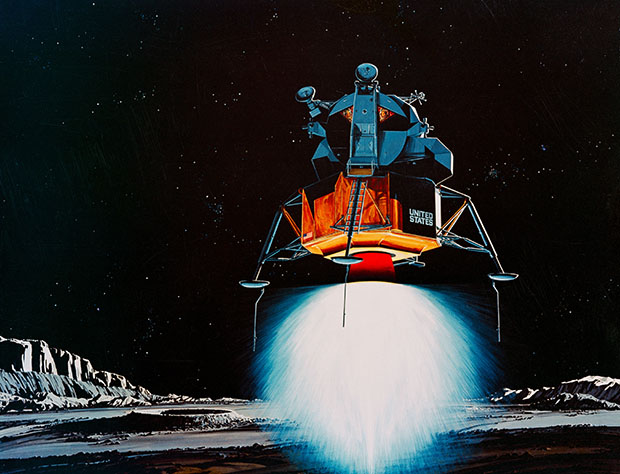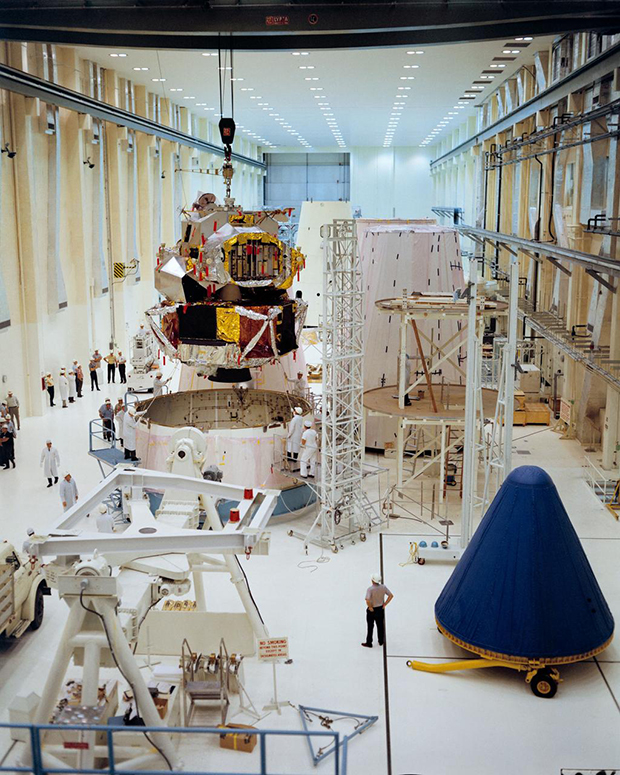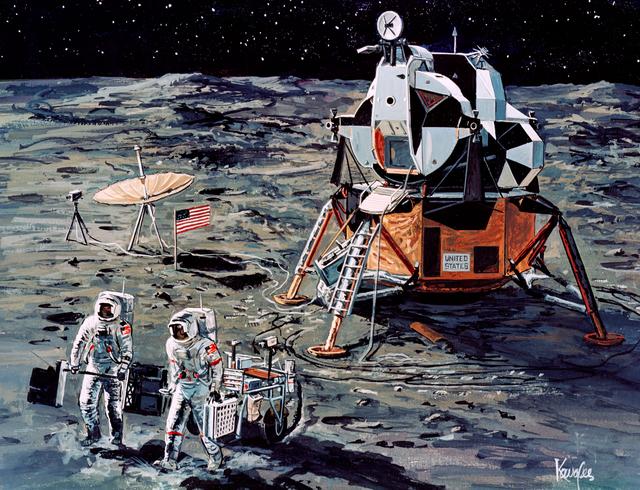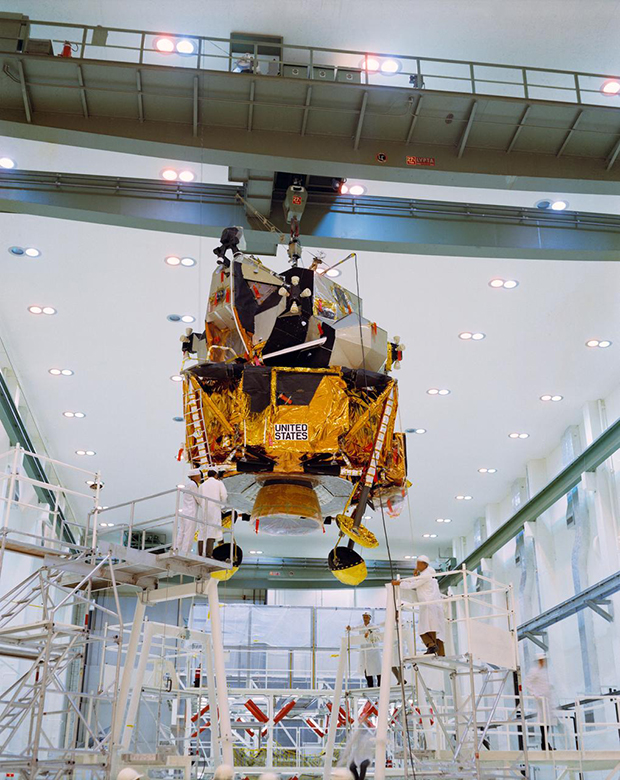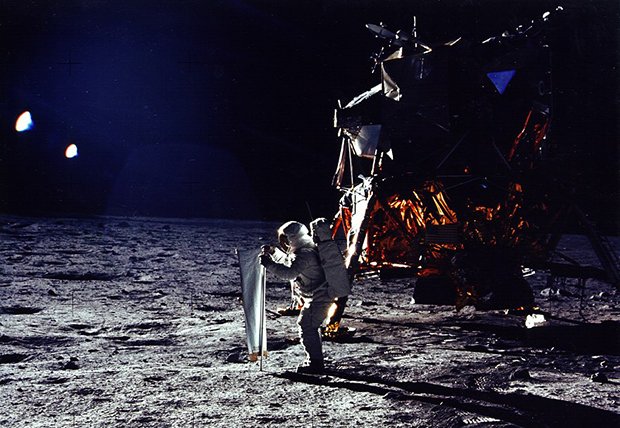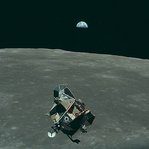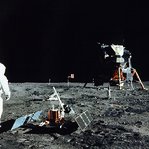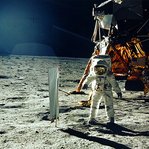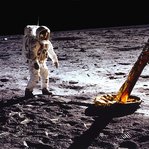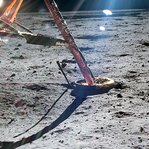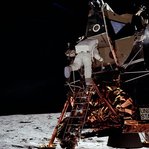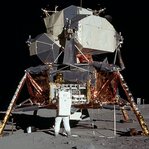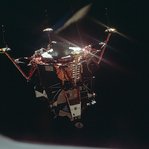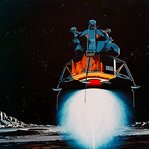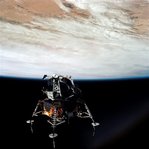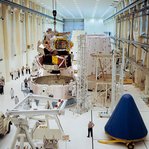The Lunar Module (also known as the “Lem”) was made right here on Long Island by Long Islanders. Grumman Aerospace Corporation got the contract for this vital vehicle that ferried the first men from lunar orbit to the surface of the moon and back. Below we present some historical pics of the Lunar Module in action.
Click here to read: Crazy Facts About the Grumman Apollo Lunar Module.
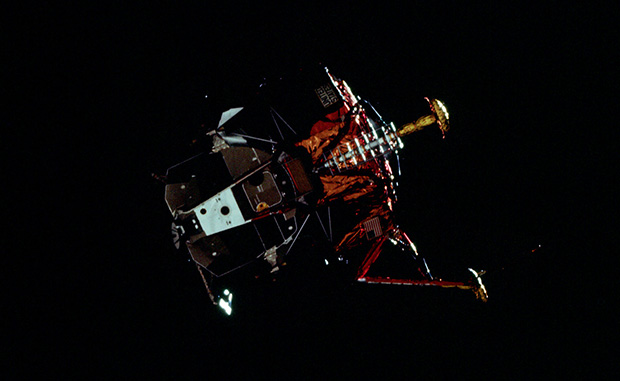
Photo: NASA.
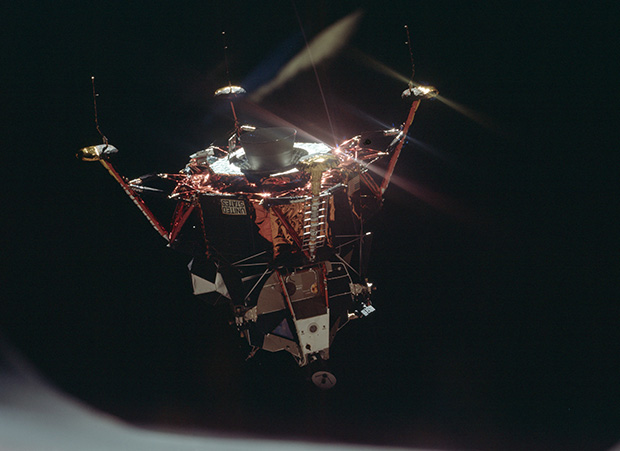
Photo: NASA.
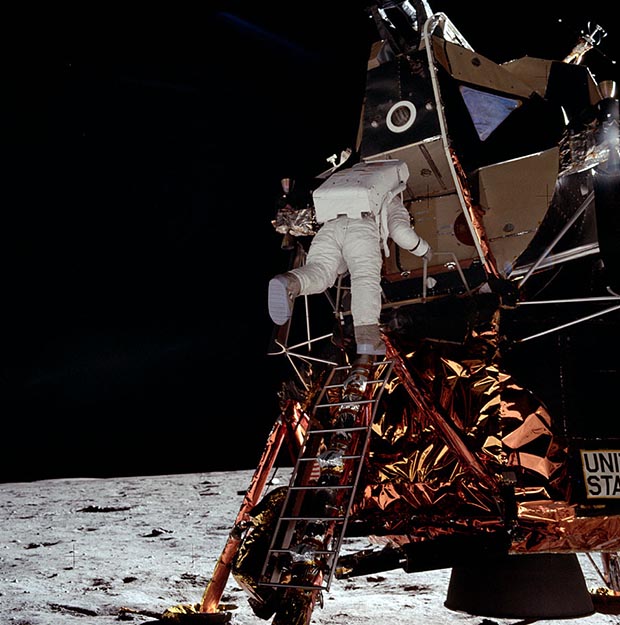
Buzz Aldrin is jumping down to the top rung of the ladder and hasn't quite landed on it. He is gripping the handrail with both hands and, rather than walk down the ladder, he is hopping down. Photo: NASA.
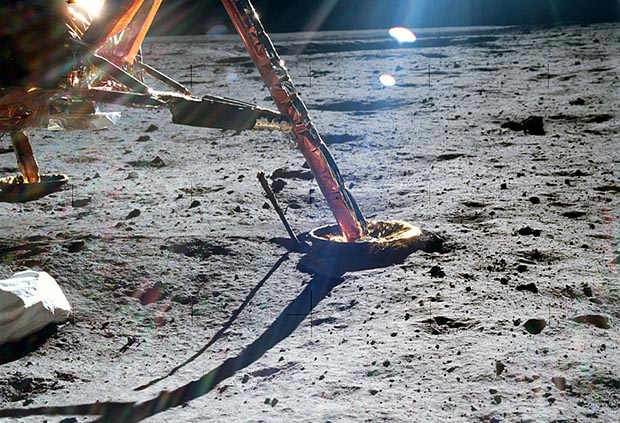
Showing south footpad and bent probe. The jett bag is on the right side of the image. Little West Crater is slightly north of up-Sun, in the distance above the footpad. Photo: NASA.

Aldrin stands beside LM strut and probe. Photo: NASA.
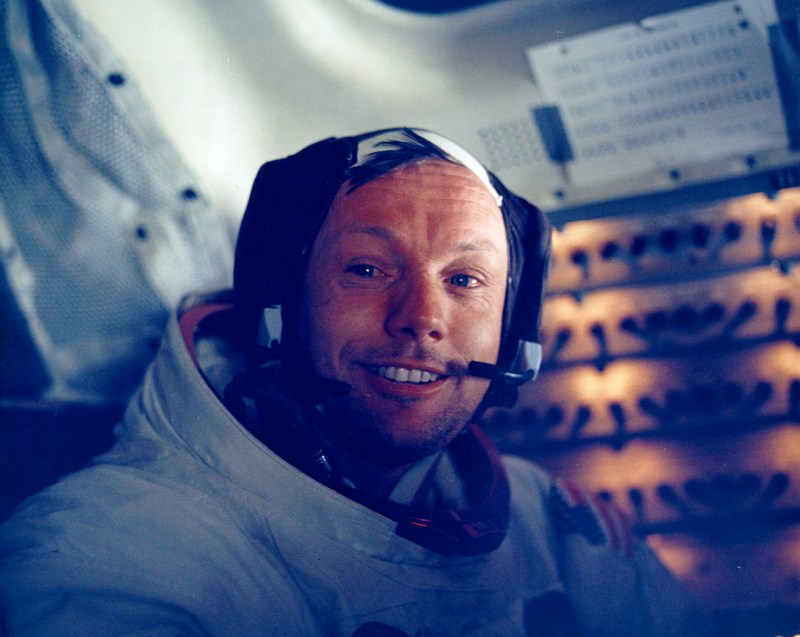
20 July 1969 --- This photograph of astronaut Neil A. Armstrong, Apollo 11 commander, was taken inside the Lunar Module (LM) while the LM rested on the lunar surface. Astronauts Armstrong and Edwin E. Aldrin Jr., lunar module pilot, had already completed their historic extravehicular activity (EVA) when this picture was made. Astronaut Michael Collins, command module pilot, remained with the Command and Service Modules (CSM) in lunar orbit while Armstrong and Aldrin explored the moon's surface. Photo: NASA.
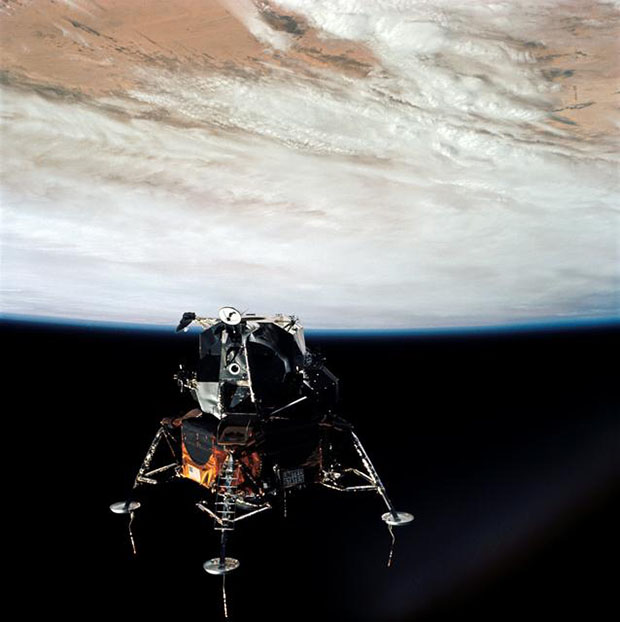
7 March 1969 --- A view of the Apollo 9 Lunar Module (LM), "Spider", in a lunar landing configuration, as photographed from the Command and Service Modules (CSM) on the fifth day of the Apollo 9 Earth-orbital mission. The landing gear on the "Spider" has been deployed. Lunar surface probes (sensors) extend out from landing gear foot pads. Inside the "Spider" were astronauts James A. McDivitt, Apollo 9 commander, and Russell L. Schweickart, lunar module pilot. Astronaut David R. Scott, command module pilot, remained at the controls in the Command Module (CM), "Gumdrop", while the other two astronauts checked out the Lunar Module. Photo: NASA.
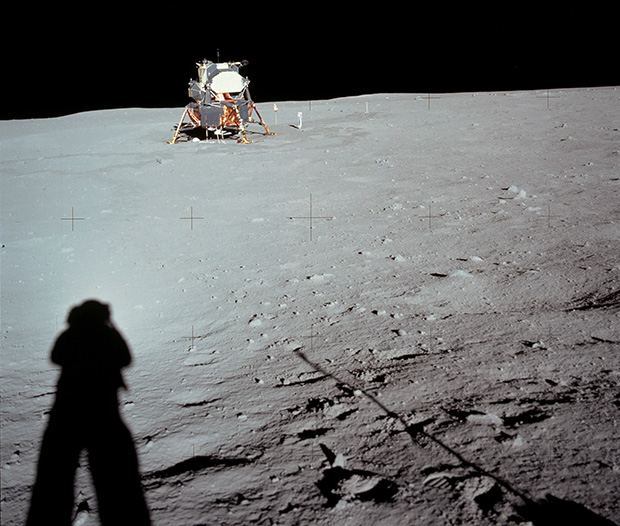
Down-Sun photograph of the LM from the rim of Little West Crater. We can see Neil's shadow and the shadow of the Gold camera. Photo: NASA.
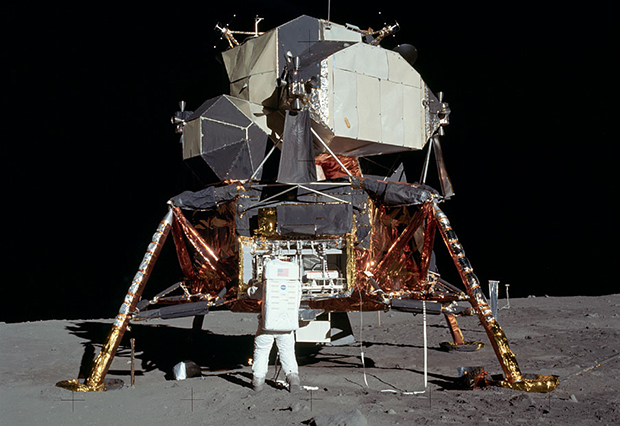
Photo: NASA.
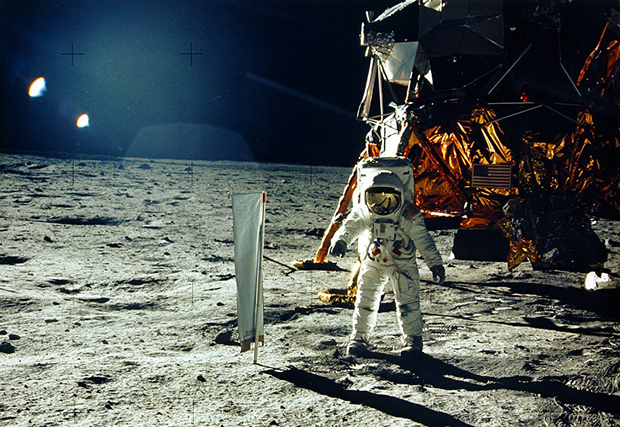
Buzz Aldrin beside solar wind experiment. Photo: NASA.
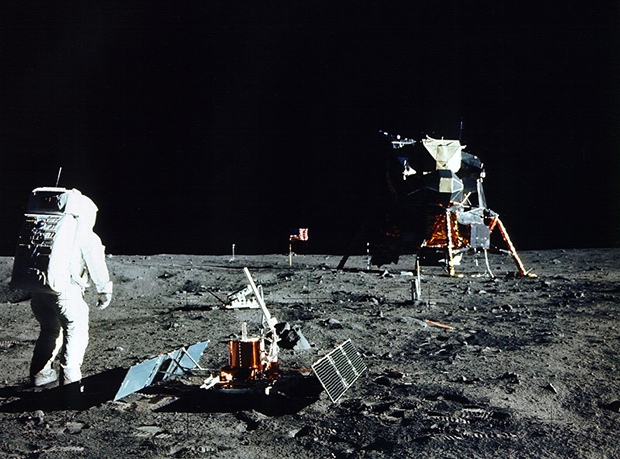
Buzz Aldrin assembles seismic experiment. Photo: NASA.
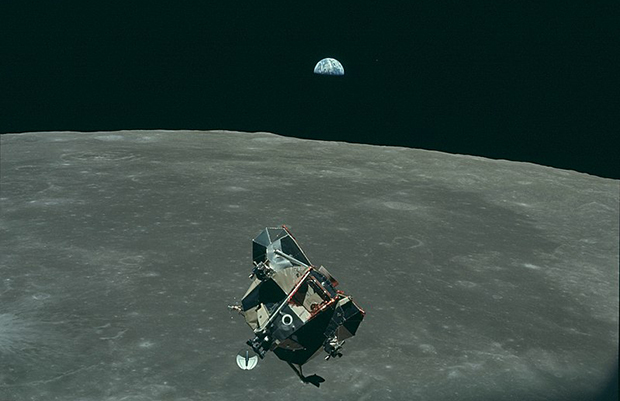
Earth, Moon and Lunar Module, in lunar orbit after return from the moon and before rendezvous with the Apollo 11 Command/Service Module. Mars is visible as the red dot on the right-hand side of Earth. Photo: NASA.
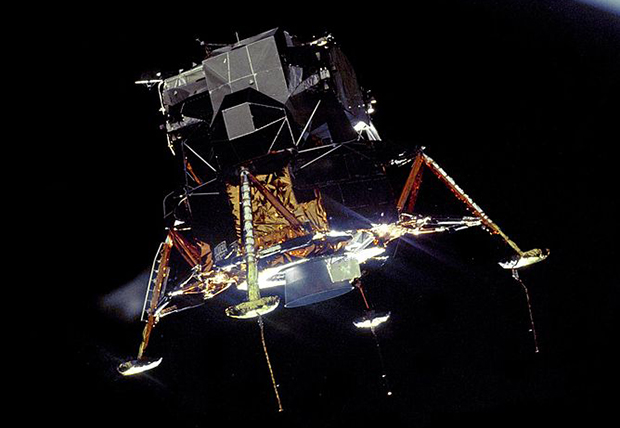
The Apollo 11 Lunar Module Eagle, in a landing configuration, was photographed in lunar orbit from the Command and Service Module Columbia. Inside the module were Commander Neil A. Armstrong and Lunar Module Pilot Buzz Aldrin. The long rod-like protrusions under the landing pods are lunar surface sensing probes. Upon contact with the lunar surface, the probes sent a signal to the crew to shut down the descent engine. Date: July 20, 1970. Photo: NASA.
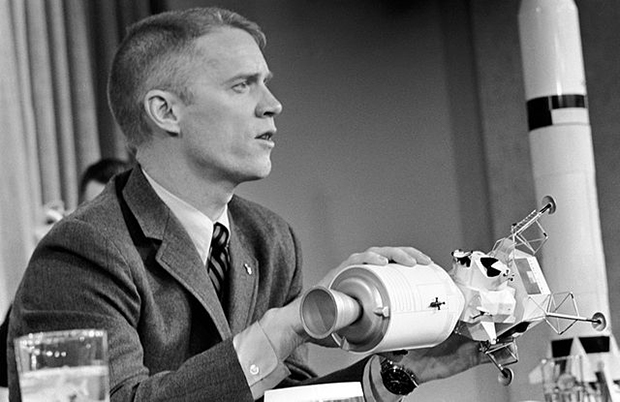
NASA astronaut Russell L. Schweickart, lunar module pilot for the Apollo 9 Earth orbital mission, demonstrating docking of the Apollo command and lunar modules during a press conference at Grumman Aircraft Engineering Corporation in New York, N.Y. NASA photo S69-17615 in public domain. Date: January 25, 1969. Photo: NASA.
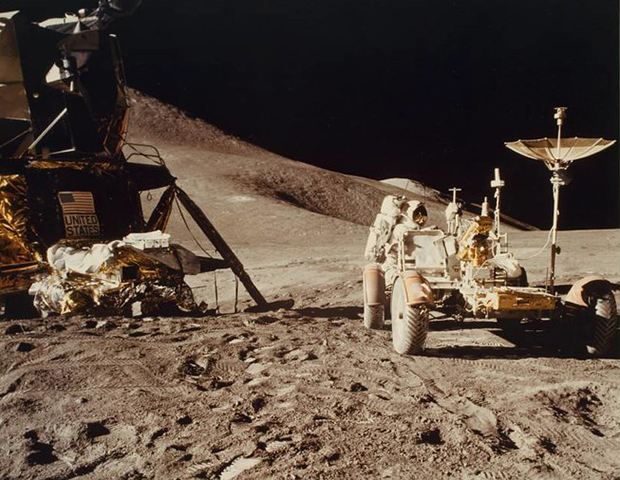
Lunar Activities During the Apollo 15 Mission. Date: July/August 1971. Photo: NASA.
